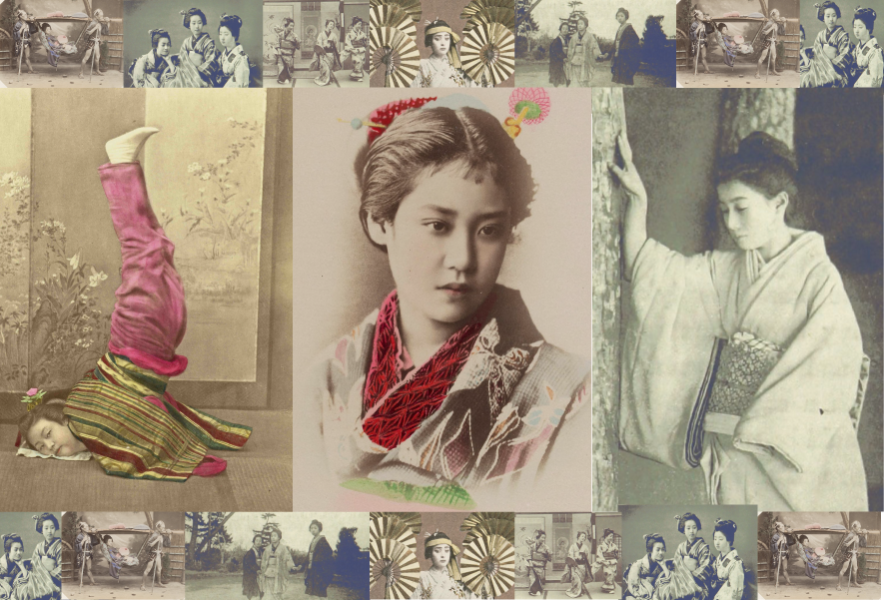About 150 years ago, Japan was one of the most exciting places in the world.
Visitors from overseas were amazed by the Japanese people, and their way of life, and took a lot of pictures with the photographic equipment that was becoming popular at that time.
Many of the photographs taken at the time are still kept in museums of the world.
These are images that show such “scenes of Meiji Japan” photographed by foreigners and these are published as the public domain now.
This episode focuses on the ladies who lived in the Meiji era.
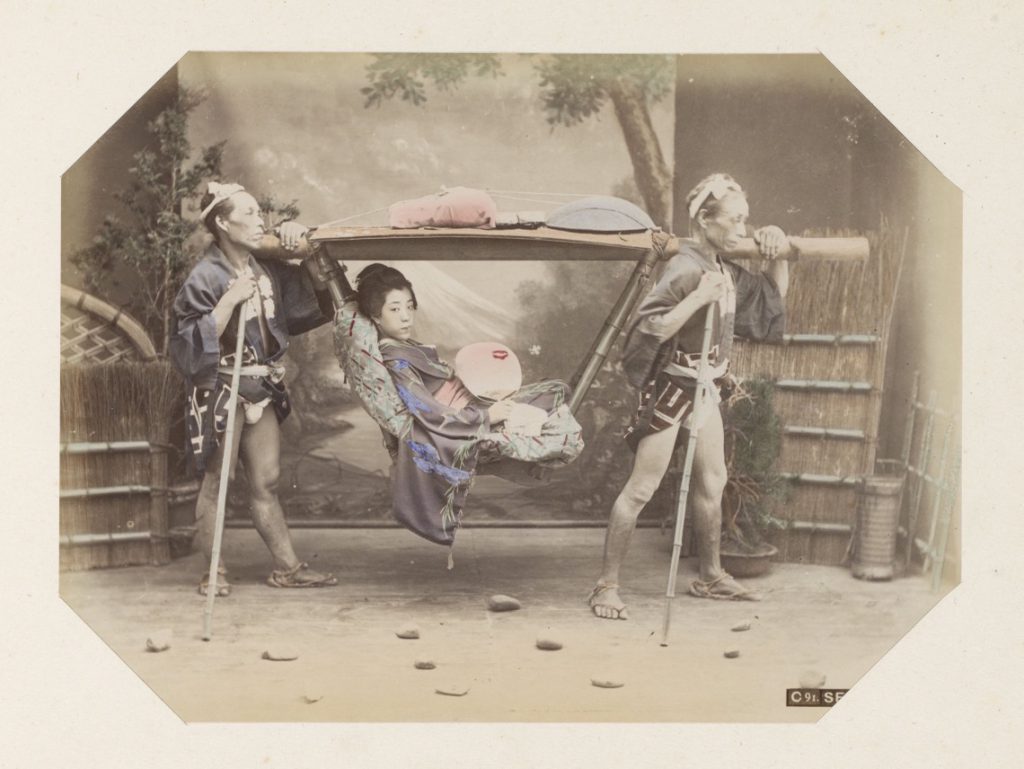
Raimund Freiherr von Stillfried (presumably) “Woman in a sedan chair with two bearers” (1862-66/from The Rijksmuseum)
Stilfried was an Austrian photographer who wandered around the world; he visited Japan at least twice in the 1860s, and when he came to Japan again, he settled in Yokohama, where he learned photography techniques from Beato, whom I mentioned earlier, and later established his own photography studio. His photographic style was often posed photographs using a studio, and his colored photographs were exhibited at the Vienna World Exposition in 1873, and the photo books he sold in gorgeous albums became very popular among foreigners. Many Japanese photographers, such as Kinbei Kusakabe, were nurtured by him.
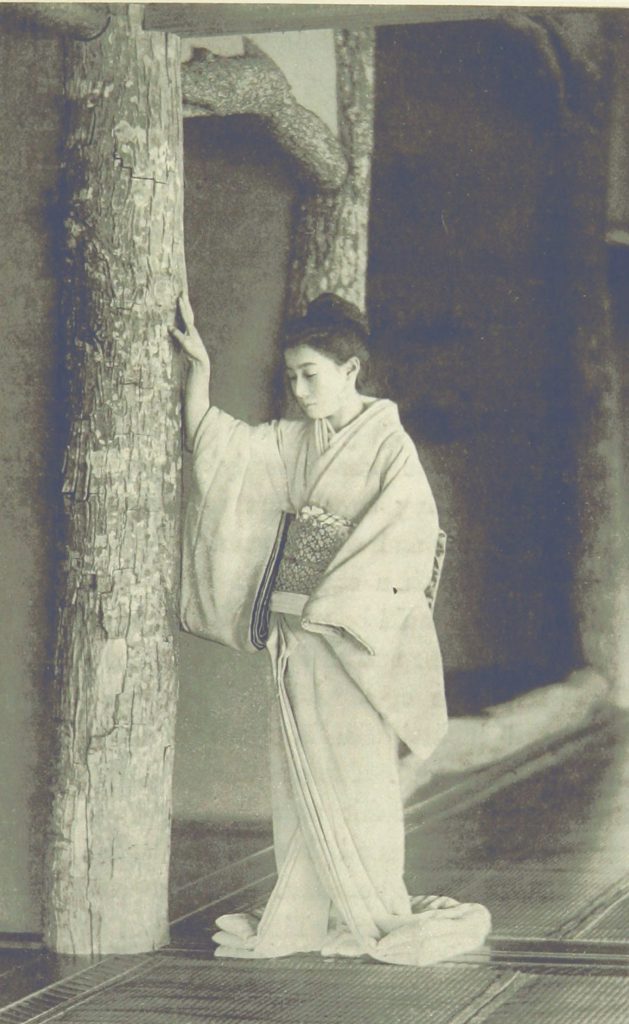
From the book of “Ayame-san”(1890) written by James Murdoch. Photo by William K. Burton. (from The British Library Digital Collection)
As the title of the book is “Ayame-san,” there are many photos of women in this book introduced earlier. Murdoch married a Japanese woman named Takeko Okada in 1899 and lived in Shiba-Takanawa, Tokyo.
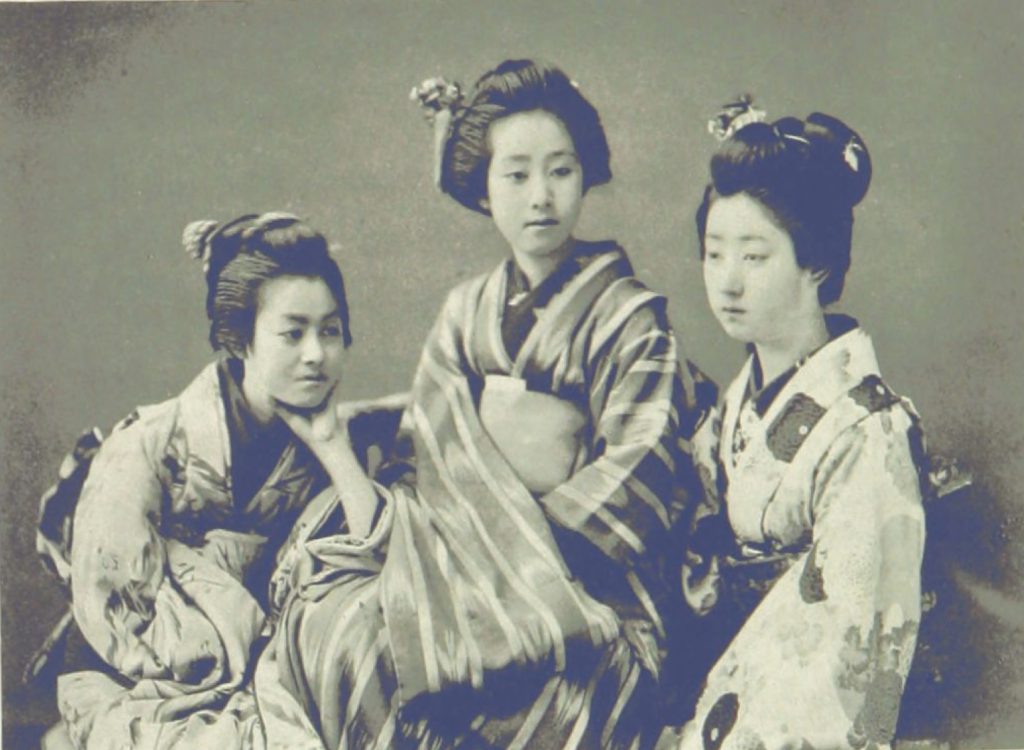
From the book of “Ayame-san”(1890) written by James Murdoch. Photo by William K. Burton. (from The British Library Digital Collection)

From the book of “Ayame-san”(1890) written by James Murdoch. Photo by William K. Burton. (from The British Library Digital Collection)
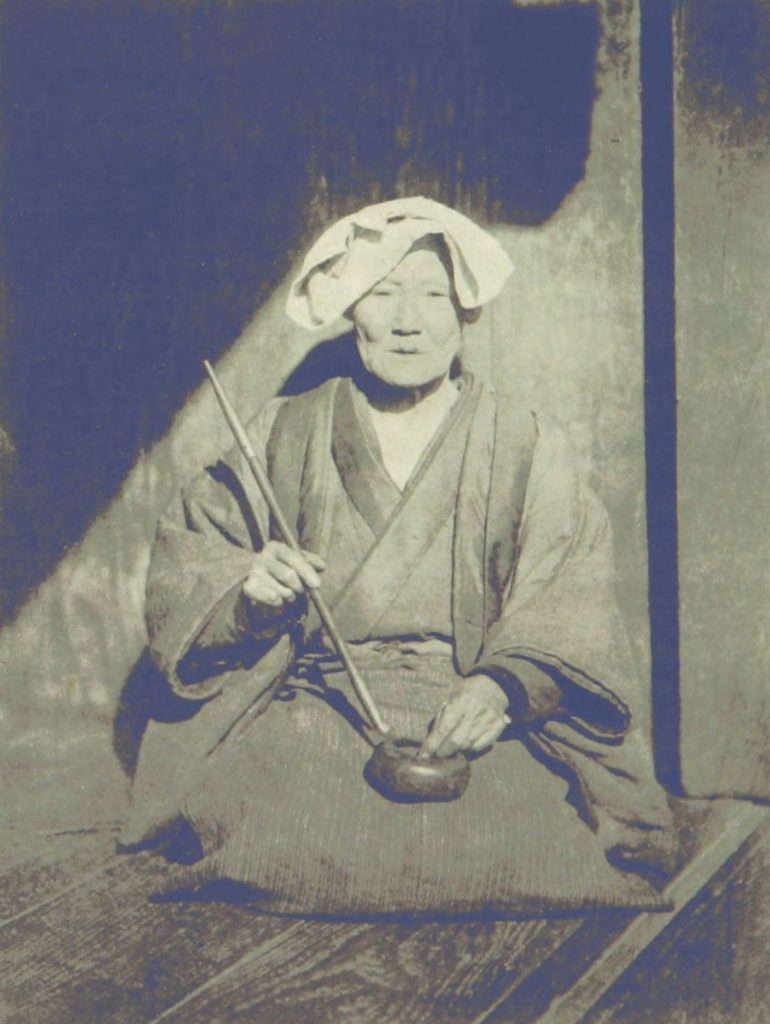
From the book of “Ayame-san”(1890) written by James Murdoch. Photo by William K. Burton. (from The British Library Digital Collection)
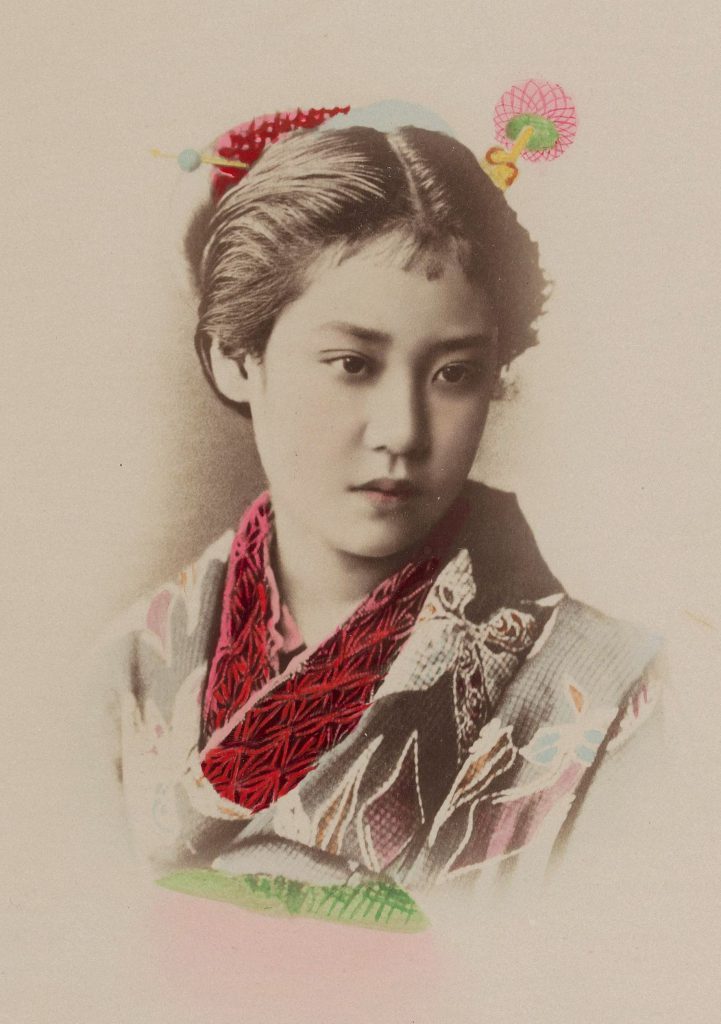
Adolfo Farsari (presumably) “A portrait of a woman” (1883-1885/from The Rijksmuseum)
Falsari was an Italian photographer based in Yokohama during the Meiji era. His photographs were also very popular and spread through books and photo collections, and it is said that his photographic skills greatly influenced the improvement of Japanese photographic techniques. However, there are various theories as to who took this photograph, and some believe it was taken by Kinbei Kusakabe. The Amsterdam Museum of Art considers it “presumed”.

Adolfo Farsari (presumably) “Unknown Japanese woman in acrobatic pose” (1871-1881/from The Rijksmuseum)
I know you don’t know why the girl is posing in such an acrobatic and crazy pose. But in Nagoya, there is a strange traditional performance mostly performed by Geisha girls. This pose represents the Mythical Shachi(Killer Whale). I bet Farsari was surprised so much when he saw this pose for the first time.
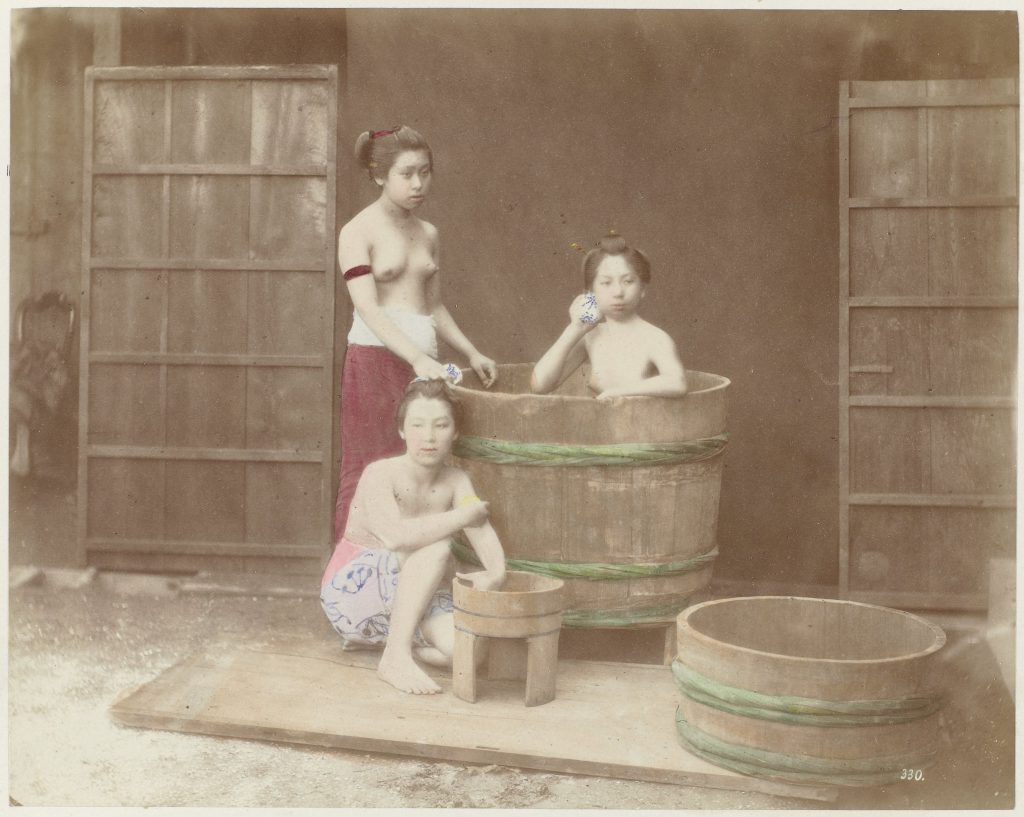
Adolfo Farsari (presumably) “Three bathing women in bathtub” (1871-1886/from The Rijksmuseum)

